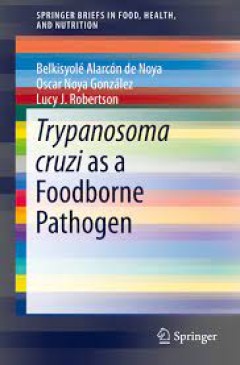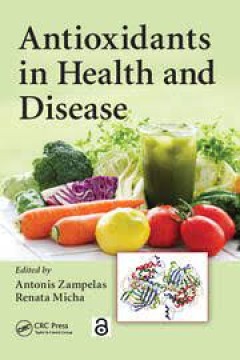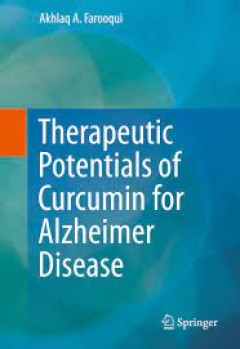Filter by

Chapter 2 Heritage and food history
Food Heritage and Nationalism in Europe contends that food is a fundamental element of heritage, and a particularly important one in times of crisis. Arguing that food, taste, cuisine and gastronomy are crucial markers of identity that are inherently connected to constructions of place, tradition and the past, the book demonstrates how they play a role in intangible, as well as tangible, herita…
- Edition
- -
- ISBN/ISSN
- -
- Collation
- Pages 16
- Series Title
- -
- Call Number
- 642 FIO c

High Pressure Fluid Technology for Green Food Processing
The aim of this book is to present the fundamentals of high pressure technologies from the perspective of mass transfer phenomena and thermodynamic considerations. Novel food applications are exposed and their relation to chemical analysis, extraction, reaction and particle formation processes are outlined. The chapters are written by a diverse group of scientists with expertise in chemistry, f…
- Edition
- 1
- ISBN/ISSN
- 978-3-319-10610-6
- Collation
- X, 517
- Series Title
- Food Engineering Series
- Call Number
- 574 HIG

Nordic Nutrition Recommendations 2012 Integrating nutrition and physical act…
The Nordic countries have collaborated in setting guidelines for dietary composition and recommended intakes of nutrients for several decades through the joint publication of the Nordic Nutrition Recommendations (NNR). This 5th edition, the NNR 2012, gives Dietary Reference Values (DRVs) for nutrients, and compared with earlier editions more emphasis has been put on evaluating the scientific ev…
- Edition
- -
- ISBN/ISSN
- 9789289326704
- Collation
- -
- Series Title
- -
- Call Number
- -

Regulatory Foundations for the Food Protection Professional
Regulatory Foundations for the Food Protection Professional is a comprehensive guide for the entry-level food protection professional (FPP) working in either the public or private sector. The book can also serve as a foundation for students in academic programs preparing for a career in food protection. Additionally, as the Food Safety Modernization Act (FSMA) is implemented, this book will pro…
- Edition
- -
- ISBN/ISSN
- -
- Collation
- -
- Series Title
- -
- Call Number
- -

Postharvest Quality Assurance of Fruits: Practical Approaches for Developing …
This book presents a comprehensive study of the handling of fresh fruits in the developing world from harvesting to the shelf. With annual losses ranging from 30-40% due to lack of knowledge on proper handling practices and value addition, this book's information on postharvest handling and quality testing is crucial for reducing these losses and improving the quality and safety of fresh fruits…
- Edition
- 1
- ISBN/ISSN
- 978-3-319-21197-8
- Collation
- XX, 265
- Series Title
- -
- Call Number
- 634 AHM p

Trypanosoma cruzi as a Foodborne Pathogen
This Brief provides a comprehensive overview of Trypanosoma cruzi, a parasite that is traditionally considered as exclusively vectorborne, but can be foodborne, and may lead to outbreaks of Chagas disease in consumers. The characteristics of Trypanosoma cruzi and the clinical effects of the disease are covered, including documented outbreaks, regional patterns, and epidemiology. The various tra…
- Edition
- -
- ISBN/ISSN
- 978-3-319-23410-6
- Collation
- -
- Series Title
- -
- Call Number
- -

Antioxidants in Health and Disease
Antioxidants in Health and Disease discusses the effects of dietary antioxidants and antioxidant supplementation in humans. It reviews the latest evidence-based research in the area, principally through prospective cohort studies and randomized controlled trials. The book assesses major dietary antioxidants and discusses their use in diseases such as cancer, diabetes, stroke, coronary heart dis…
- Edition
- -
- ISBN/ISSN
- -
- Collation
- -
- Series Title
- -
- Call Number
- -

Toxicological Risk Assessment for Beginners
This book serves as a comprehensive introductory guide to the practical aspects of risk assessment. Chapters include clearly defined objectives and summaries. The book includes: hazard identification, dose-response, exposure assessment, risk characterization, chemical mixtures, epidemiology, emerging issues and global perspectives with accessible language. The book concludes with a set of hypot…
- Edition
- -
- ISBN/ISSN
- 978-3-319-12751-4
- Collation
- -
- Series Title
- -
- Call Number
- -

Carotenoids in Nature : Biosynthesis, Regulation and Function
This comprehensive, edited book explores carotenoids and their important functional roles in yeast, bacteria and plants and a profound exposition on the structures of carotenoid molecules, focusing in the first of three parts on the biosynthesis of carotenoids. The regulation of carotenoid biosynthesis in photosynthesis as well as in plant, fruits, storage roots and algae is central to the seco…
- Edition
- -
- ISBN/ISSN
- 978-3-319-39126-7
- Collation
- -
- Series Title
- -
- Call Number
- 641.3

Therapeutic Potentials of Curcumin for Alzheimer Disease
This is the first book on the market that explores the importance of curcumin for the treatment of neurological disorders. It has been estimated that 35.6 million people globally had dementia in 2010 and the prevalence of dementia has been predicted to double every 20 years. Thus, 115.4 million people may be living with dementia in 2050. Alzheimer’s disease (AD) is the leading cause of dement…
- Edition
- -
- ISBN/ISSN
- 978-3-319-15889-1
- Collation
- -
- Series Title
- -
- Call Number
- -
 Computer Science, Information & General Works
Computer Science, Information & General Works  Philosophy & Psychology
Philosophy & Psychology  Religion
Religion  Social Sciences
Social Sciences  Language
Language  Pure Science
Pure Science  Applied Sciences
Applied Sciences  Art & Recreation
Art & Recreation  Literature
Literature  History & Geography
History & Geography